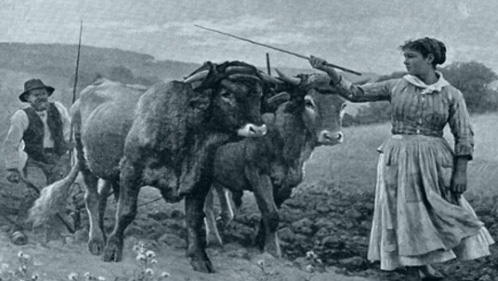Challenge Accepted! Successful Review for the AP® Human Geography Exam
We are just weeks away from the AP® Human Geography Exam—wow! As teachers we are nervous, anxious, and hoping that we have done everything we can to...
AP & Honors Mathematics
Explore Wiley titles to support both AP and Honors mathematics instruction.
Literacy Skills & Intensive Reading
Connections: Reading – Grades 6–12
Empower student success with a proven intensive reading program that develops strong reading skills in striving readers.
Drama, Speech & Debate
Basic Drama Projects 10th Edition
Build students’ confidence and competence with comprehensive, project-based theatre instruction.
Literature
Connections: Literature
Support learners as they study dynamic, relevant texts and bring the richness of diverse voices to students through literature.
Literature & Thought
Develop critical thinking, reading, and writing across literacy themes, genres, historical eras, and current events.
Language Arts
Vocabu-Lit® – Grades 6–12
Help students build word power using high-quality contemporary and classic literature, nonfiction, essays, and more.
Connections: Writing & Language
Help students develop grammar, usage, mechanics, vocabulary, spelling, and writing and editing skills.
Reading/English Language Arts
Measuring Up to the English Language Arts Standards
Incorporate standards-driven teaching strategies to complement your ELA curriculum.
English Language Learners
Measuring Up for English Language Learners
Incorporate research-based best practices for ELLs with an approach that includes a focus on language acquisition strategies.
Mathematics
Measuring Up to the Mathematics Standards
Incorporate standards-driven teaching strategies to complement your mathematics curriculum.
Foundations
Measuring Up Foundations
Help students master foundational math skills that are critical for students to find academic success.
Science
Measuring Up to the Next Generation Science Standards
Give students comprehensive NGSS coverage while targeting instruction and providing rigorous standards practice.
Assessment
Measuring Up Live
Deliver innovative assessment and practice technology designed to offer data-driven instructional support.
For a better website experience, please confirm you are in:

So, you have taken the plunge and are now teaching AP® Human Geography. People will ask “What is Human Geography?” but you have no idea how to answer (yet). I get this question all the time (from students and teachers alike) and I have a short and longer answer that will help kick off your understanding of this course and its importance.
The short answer: “Human Geography studies where things are and why they are there.”
The longer response includes the short answer but is best illustrated with a fast-food example. While the question of where things are located is important, the more important question is “why there.” Geographers are trained to look for spatial patterns in the world and then apply theories and reasoning to explain why these patterns exist.
Thinking spatially means studying the arrangement and distribution of phenomena (stuff) in the world. For example, have you ever looked at a busy intersection and noticed that every corner has a fast-food restaurant and many of these restaurants serve the same basic food? (Meat in a bun (beef/chicken), potatoes (chips/fries), and carbonated sugary beverages.) This pattern reoccurs across the United States and there are a variety of reasons that explain why the pattern reoccurs.
A common sign showing the variety of food choices at an interstate or highway exit.
Daniel Barcelona, CC BY 3.0, via Wikimedia Commons
Geographers can explain why patterns occur, and use tools such as economic land use models, spatial flow models, transportation systems, zoning laws, population, and concepts of culture such as traditions and values. Additionally, human geographers are interested in the impacts that different patterns can have on people, communities, the economy, society, governments, or the environment. Educating your students on how to observe the world like a geographer is one of the most important skills you can impart.
Geography is all around us. This course and the Advanced Placement® Human Geography coursebook by AMSCO® is dedicated to having students and teachers develop a set of skills to better analyze the world in which we live. AP® Human Geography is a true 21st-century course that will allow students to look at a wide range of topics with the purpose of using the lens of geography to identify and describe patterns and then apply a depth of academic theories and models to explain the reasons the patterns may exist. The AMSCO® book is structured and written to help teachers and students develop the necessary knowledge and skills to be successful in the class and on the exam. In fact, each chapter and unit have questions and activities that will allow you to practice the critical thinking and skills of geographers.
One of the most powerful skills in a geographer’s arsenal is the ability to analyze patterns at different scales of analysis (Topic 1.6) or look at issues at the local, regional, country, or global scale. Using the fast-food example above we can look at the topic on the local scale of an intersection and discuss visibility, traffic patterns, right-hand turns in and out of parking lots, local incomes, or zoning rules. But we can also zoom out and study the patterns of the movement and consumption of food on a national or even global scale by discussing where the wheat for the bread is grown or the processes that companies use to move food and products around the world. Each scale of analysis often reveals new understandings that help us develop a more complete picture of the patterns and processes that shape our world.
Human geography is dynamic, interesting, and can impact how you view and explain the world. Success in this course is built on learning how to think like a geographer, a willingness to describe patterns, and refined skills of explaining the processes or reasons why the patterns exist.
I am excited for you as you take students on a journey into the field of geography. Who knows—your students might become amazing geographers and develop great passion and skills to help the people and communities of the world!

We are just weeks away from the AP® Human Geography Exam—wow! As teachers we are nervous, anxious, and hoping that we have done everything we can to...

It’s the time of year when teachers and students begin their final push towards preparing for the AP Human Geography exam. Teachers and students...

The AP® Human Geo test is fast approaching. But don't stress! Author David Palmer offers words of encouragement and advice for seeing your students...

This blog entry is designed to provide some hints to help your students improve their writing on the free-response section of the exam. The...

Gender and power are key themes in our world: both past and present. Women, especially, have been fighting for equality and power for generations....

The Supreme Court of the United States is often seen as the most distant and befuddling branch for my students. Whether it is misunderstanding their...

Get to know one of our editors, Joseph Bianchi, who specializes in AP® Social Studies. Joe answers our questions about how he carries over his 25...

One of the greatest rewards of teaching history is when students can show that they can make effective arguments supported by historical evidence....

The teaching of AP® World History can be a daunting task at times. Teachers are asked to teach over 800 years of historical content and then develop...

Early in a school year it can be a real challenge to know how to begin teaching students critical skills they need to score on the AP® U.S. History...

The following lesson plan uses the historical thinking skills of comparative and cause and effect to analyze two historians' perspectives on the...

Get to know the author of our AP® United States Government & Politics textbook. David Wolfford answers our questions about how he maintains his love...
